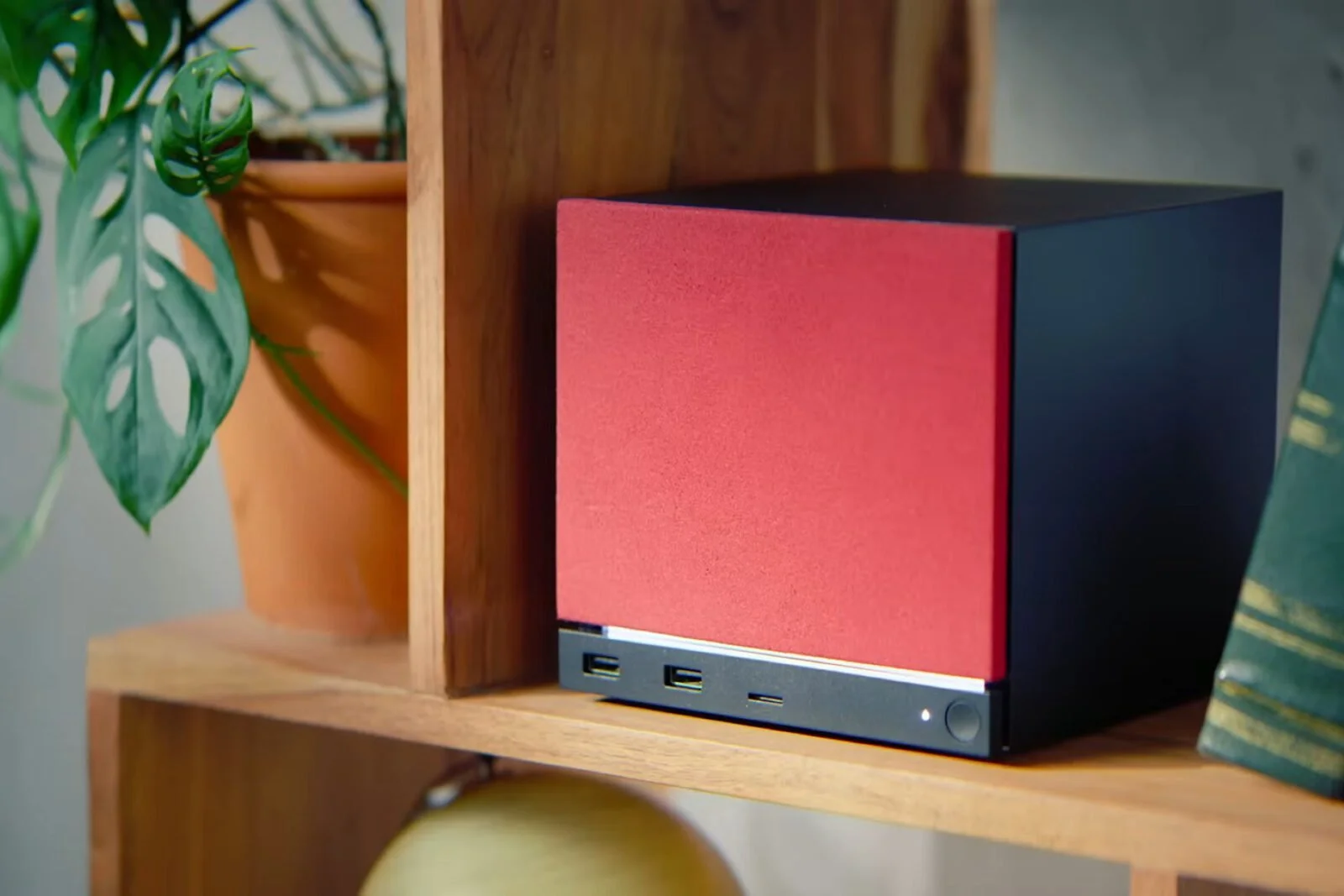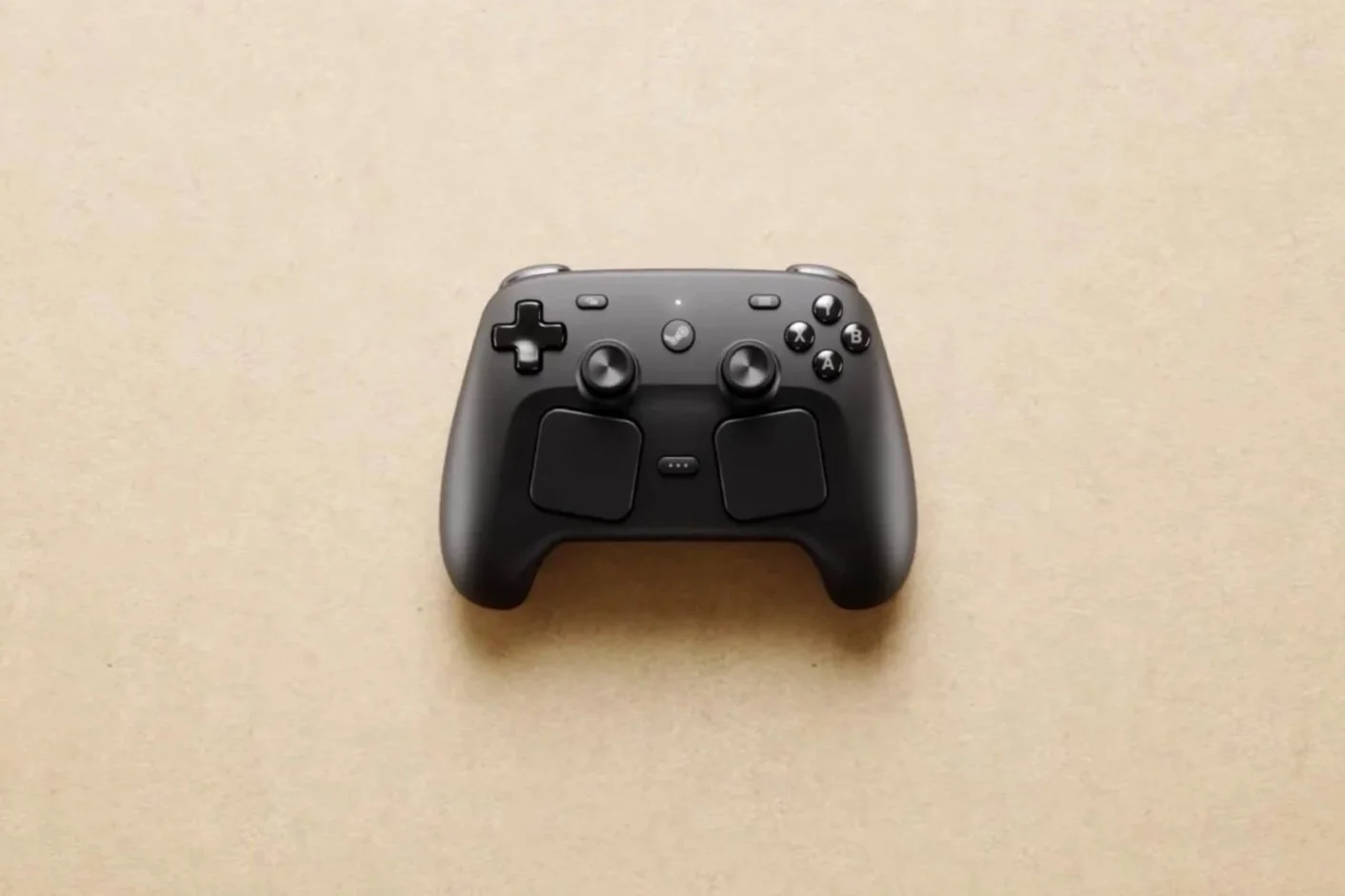The Steam Machine: a Tiny Box From Valve With Big Plans
Vale is officially stepping back into the console race with the Steam Machine, plus it gets a redesigned Steam Controller and support for the Steam Frame Ecosystem. The console is a tiny PC box that is meant to sit in the living room, while still acting like a PC. The idea isn’t new, because Valve has tried Steam Machines before, but this version is much more polished after the success of the Steam Deck and SteamOS.
Image: Valve
Many publications like Gizmodo, IGN, The Verge, and more say that the concept looks promising or that it is surprisingly capable. I haven’t tested it like them, so I can only write about what the specs and my thoughts on it are, not how it truly feels to me.
In the Steam Machine, there is a Zen 4 CPU, RDNA 3 graphics, a 4.8GHz clock, 28 Compute Units, 16GB DDR5 of RAM, and 8 GB of VRAM. Valve says all of this makes it have six times the horsepower of the Steam Deck. IGN saw Cyberpunk 2077 playable at medium with some ray tracing, and Silent Hill F did struggle at 4K. The Steam Machine might approach PS5 and PS5 Pro levels depending on thermal limits, too. It is smaller than the Xbox Series X, but it does aim for a similar target using FSR upscaling. There are also different storage options: with 512/2TB and microSD options, and with built-in PSU support, it makes for a console-like simplicity.
There are many different ports on this device: a 4x USB-A, 1x USB-C, HDMI, DisplayPort, Ethernet, and microSD. Valve wants this to act like a console, with Steam Machine Verified badges like Steam Deck Verified. Why SteamOS matters is that Linux is finally able to replace Windows for many players. The Steam Deck’s success showed what the right thing was after years of bad or mid products from Valve.
Image: Valve Screenshot: Gizmodo
Valve also built the Steam Machine to be customizable with swappable front plates, an LED light strip that reacts to downloads or animations, and, as shown in demos, wood grain and graffiti skins. Valve hasn't confirmed if it will sell its own plates, so 3D printing ones might become a community solution. It could appeal to PC modders and fans, too, so I can’t wait to see if the customizable skins will make the console more like what the users want.
With the new console comes a revised Steam Controller, designed to pair with the Steam Machine. It works with two large touchpads like the 2014 models, has drift-resistant TMR joysticks, and the normal full face button layout. There is also some nice added tech like a built-in gyroscope, motion triggers that are activated by the thumb placement or grips, and a charging puck that doubles as a wireless receiver. All of these features make it seem like a cool controller, wow!
Image: Valve
Valve has been trying the idea of a living-room console for a decade, but has never actually made a breakthrough in the market. It is great to see that they might have finally pushed through and are actually making something. That Steam Deck proved that people trust Valve with hardware again.
There is definitely a shift in the console market with Xbox’s strategy leaving gaps for others, PlayStation steady but not innovating in form factor, and the Nintendo Switch 2 dominating its own category but not directly competing with the Steam Machine. That’s probably when Valve saw a window to bring a PC-like box to the living room without Windows.
The pricing is not known yet for the Steam Machine, but a release date is expected for early 2026. I really hope that the price for this Steam Machine is reasonable, so it becomes popular.
Do you think that Valve can compete with the PlayStation and Xbox? Are you interested in the Steam Controller’s touchpads, or do you like traditional sticks better? Would you customize the front plate, and if you did, what would you design? Let us know in the comments!
Source: Gizmodo Images: Valve


